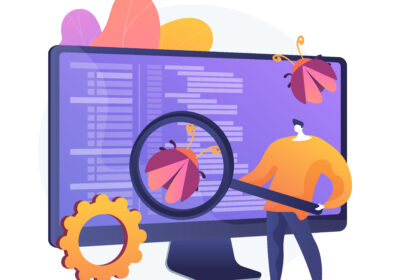Agile testing, despite all its benefits, still is quite challenging for testers. The software testing Dubai industry have only recently adopted agile testing methodologies, and their efforts for each project begin with devising strategies to overcome challenges should any arise.
An experienced software development company in Dubai wouldn’t try to tackle these challenges head on, especially if they follow agile practices. An agile ecosystem enhances the role of QA in projects but requires them to have a solid understanding of agile development methodologies and the challenges lying dormant in it.
Agile Testing Challenges
The core functionality of agile development is to deliver working software frequently, as iterations. Each iteration will have added features and enhancements compared to the preceding ones. These enhancements should be of value to the client. And this is where challenges begin for developers and the QA team.
-
Last minute changes or change in requirements.
Changing requirements mid-sprint is quite common in an agile environment. As a matter of fact, agile is designed to handle such scenarios without much risks. However, this can still become problematic for developers and testers who have already started working on the enhancements for the next iteration. They would sometimes have to scrap the half-baked iteration completely, affecting the scope of the project or making it harder to meet deadlines.
Solution
In such a scenario, what the testers can do is to document every little detail about the tests that have been run, and which parts of the application haven’t been tested. This would help the project team and the manager make an informed decision on the features that can be added while considering the risks.
-
When the client/product owner is unable to define a feature he/she wants
Quite often, the client or the product owner might get an idea to add a specific feature to the product during development. Not all of them might be able to detail a good set of acceptance criteria so the developers can understand the feature and the context it applies to. Still, they may provide a vague description to the developers, subsequently asking them to build a prototype to get more ideas about the feature and its behavior in the product.
This makes it particularly challenging for the testers as they won’t have an understanding of the feature. It’ll be difficult for them to construct test cases.
Solution
The testing lead would be having the experience to start testing without detailed requirements by considering advanced scenarios so as to test the basic concept. These high level test scenarios can still maintain the context even if there are changes in the details. Over time, they can communicate with the client after submitting test results. Based on the results, it would be easier to get an overview of how the client want the feature to behave.
-
Giving early feedback to developers
Testing is more of an activity than a phase in an agile environment i.e. testers will have to begin either from the beginning of the development or a bit earlier before the development starts. The testers should make sure that any backlogs are elaborated during the grooming sessions. This requires proper collaboration with the client to gain insights so as to help develop the appropriate acceptance criteria.
This also means testers should provide early feedback to developers. It can be challenging due to the fact that testers are required to ensure two things.
- The new feature works as specified in the acceptance criteria
- The new code hasn’t affected existing functionalities in any way
Solution
Ensure that each story discussed during the grooming sessions has adequate acceptance criteria. The whole QA team has to understand the context of a story (required addition of features and enhancements) before the development itself begins.
It’s a wise approach to create tests, both manual and automated, beforehand so that when the feature is added, testing can begin right away. Developers can be asked to make the development transparent by continuous deployment to testing environments so that testers won’t have to wait their turn. This also gives testers an insight on what the team is trying to achieve.
- Ensuring functionality across multiple browsers and devices
This mostly pertains to website testing. Websites today generally tend to have a front-end and back-end. The front-end would mostly be based on CSS and JavaScript and both could behave differently depending on the browser or the device.
One of the biggest challenges testers will have to overcome is when they are required to ensure that the website being developed functions as per expectations across all major web browsers and mobile devices.
Solution
Manually doing this would take significant effort and time. This is where automation comes to play. Automated tests can be run in parallel on multiple servers using tools like Selenium Grid. Combining it with an agile-friendly container service like Docker would make things far easier for testers.
Conclusion
Though Agile considerably reduces risks and challenges, it’s mostly never easy for testers as their role in the ecosystem is as important as a developer’s. But there are workarounds to almost all of these challenges. However, it requires strategic planning and dedicated efforts. If the testers lack the technical skills, things can get even more difficult. In such cases, outsourcing to a reliable IT solutions company would be a better idea.





